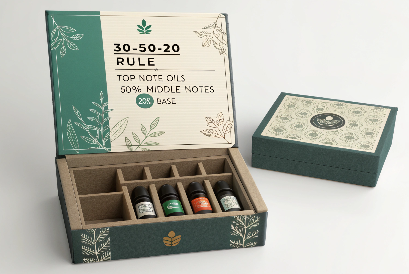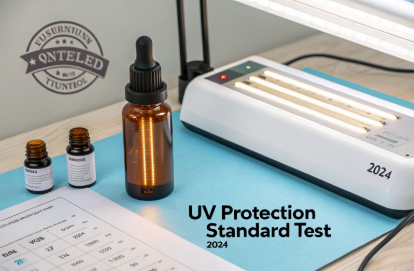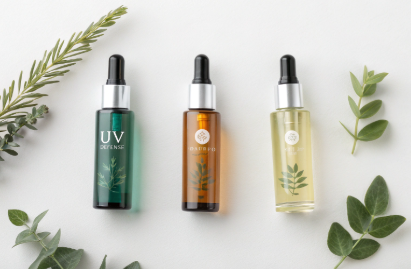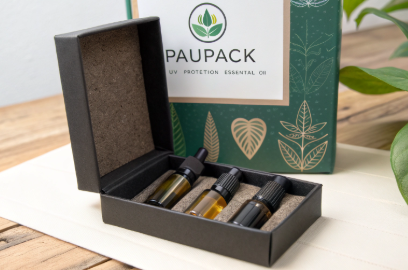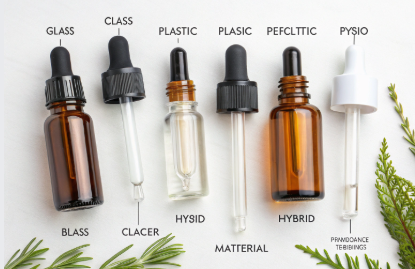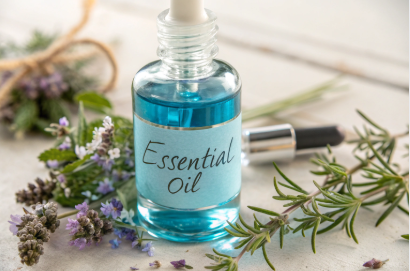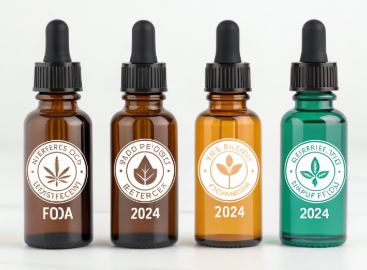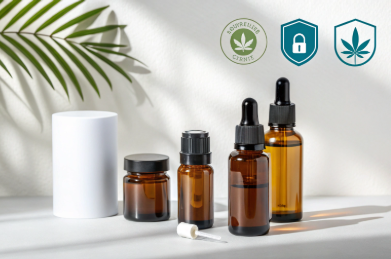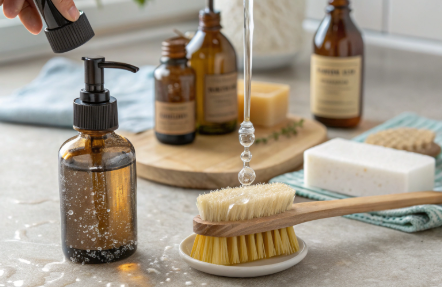Sunlight may feel natural—but for essential oils, it’s a silent destroyer.
The updated 2024 UV protection test standards now set stricter benchmarks for essential oil packaging, requiring verified barrier performance to maintain product integrity.
Here’s what you need to know about protecting your formula from harmful light exposure.
Why UV Protection Is Critical for Essential Oil Packaging?
A beautiful bottle means nothing if the oil inside degrades.
UV rays break down active compounds in essential oils, accelerating oxidation, altering scent, and reducing therapeutic potency—especially for citrus, eucalyptus, and floral formulas.
Common UV-related issues:
-
Fading or yellowing of oil
-
Reduced shelf life
-
Compromised antioxidant or antibacterial properties
-
Loss of aromatic intensity
That’s why brands investing in premium oils also need bottles with proven UV-blocking properties—especially for sunlight-exposed retail shelves or window-facing e-commerce storage.
What Are the Updated 2024 UV Test Standards and Methodologies?
The new 2024 standards bring clarity and consistency.
UV protection testing is now governed by ISO 24443:2023 (adapted for packaging), with additional regional guidance from EU 2011/10/EC and ASTM D1003 modified for opacity and photostability.
Key Testing Methods
| Test | Purpose | Light Source |
|---|---|---|
| UV Transmission (%) | Measures light passage through bottle (280–400nm range) | Xenon lamp |
| Accelerated UV Aging | Simulates 6-month sun exposure in days | UV-B chamber |
| Color Stability Post-UV | Assesses bottle discoloration or resin shift | Visible light + UV |
| Oil Degradation Assay | Evaluates chemical shift in oil post-storage | UV-C filtered cabinet |
At PauPack, we run comprehensive UV barrier tests on amber, frosted, and colored glass, as well as select PCR and PLA formats, reporting performance across critical UV bands.
How Different Bottle Materials Perform Under UV Exposure Tests?
Not all “dark” bottles block UV—and not all clear ones fail.
2024 tests show that bottle material, wall thickness, and tint type all influence UV protection levels, regardless of visible color.
UV Blocking Performance by Material
| Bottle Type | UV Transmission (280–400nm) | Rating |
|---|---|---|
| Amber Glass (PauPack 2.5mm) | <3% | Excellent |
| Frosted Glass (clear base) | 20–35% | Moderate |
| Blue Glass (standard) | 8–12% | Good |
| Green Glass | 10–20% | Good |
| PCR PET (amber) | 5–10% | Excellent (w/ UV additive) |
| PLA Bottle (clear) | 35–60% | Poor (needs wrap or coating) |
We also offer UV-resistant coating sprays and internal linings for added protection, especially for custom-tinted glass or transparent PLA packaging.
How PauPack Ensures UV Safety Through Design and Certification?
Protection is engineered from the inside out.
At PauPack, we combine material selection, wall calibration, and testing verification to ensure essential oil packaging meets both function and certification needs.
Our UV safety program includes:
-
📊 Batch-level UV transmission reports
-
🧪 In-house accelerated light testing (Q-SUN chambers)
-
🧴 Internal oil aging studies (including citrus and lavender oils)
-
📦 Packaging design for minimal light entry at neck and label zones
-
🏷️ Compliance-ready data sheets for export or medical-grade use
Clients can also request UV performance mockups showing expected oil stability over 3, 6, or 12 months—ideal for investor decks or product marketing.
How to Choose the Right Bottle for UV-sensitive Essential Oil Formulas?
Know your oil. Know your exposure. Pick your barrier.
The right UV strategy depends on your oil formula, retail environment, and brand aesthetic—but data should always guide design.
Selection Guide
| Use Case | Best UV Packaging |
|---|---|
| Citrus oils (lemon, bergamot) | Amber glass + tight neck |
| Floral blends (rose, neroli) | Blue glass or UV-coated clear |
| Serum oils (vitamin E, retinol) | PCR amber + CR cap |
| Refill packs | Frosted bottle + foil pouch secondary |
| Window display / spa retail | Amber with logo-cut label shield |
PauPack’s design team supports all UV-sensitive projects with material matching, test validation, and branding-layer integration—ensuring your bottle protects what matters most.
What Happens to Essential Oils Without Proper UV Protection?
Sunlight is a silent spoiler.
UV exposure accelerates the breakdown of volatile compounds in essential oils—damaging scent, color, and efficacy long before the product reaches the consumer.
Common degradation outcomes:
-
🌼 Faded aroma in lavender, neroli, and rose oils
-
🍋 Rancid citrus notes in lemon, bergamot, and orange oils
-
🛡️ Reduced antibacterial or calming effects due to terpene breakdown
-
🧪 Oxidation chains that trigger skin irritation or formula instability
That’s why serious brands don’t risk it. They protect formulas at the packaging level—starting with UV-proof bottles.
How Do Bottle Design Features Influence Light Protection Beyond Color?
Color matters—but design does more.
While amber and cobalt blue bottles offer built-in UV shielding, factors like wall thickness, bottle shape, and even bottle finish can significantly impact how much light gets through.
Design Elements That Strengthen UV Defense
| Feature | Benefit |
|---|---|
| Thicker walls (2–3mm) | Blocks deeper UV bands |
| Shorter shoulder height | Less surface area exposed |
| Matte or frosted texture | Diffuses light to reduce penetration |
| Internal coating | Adds extra shielding for transparent resins |
| Small neck diameter | Reduces light entry from open surface |
PauPack balances visual appeal with optical defense—engineering bottles that look elegant but perform like a barrier.
What Role Do Caps, Liners, and Labels Play in Overall UV Defense?
The bottle body is just one part of your UV strategy.
Caps, liners, and even labels contribute to light-blocking—especially in dropper or roller bottles where light can sneak in through the top.
Supporting Components That Matter
| Component | UV Function |
|---|---|
| Opaque caps | Prevent light entry through neck opening |
| Foam or TPE liners | Seal out ambient UV from top gap |
| Full-wrap labels | Shield exposed bottle surface |
| Heat-shrink bands | Add 360° coverage + tamper evidence |
| Logo foiling | Reflects light at key bottle zones |
At PauPack, we design holistic protection—ensuring every part of the package contributes to oil preservation, not just the glass.
How PauPack Customizes UV-safe Packaging for Different Oil Profiles?
Not all oils need the same defense—and not all packaging suits every oil.
PauPack tailors UV protection strategies by formula type, product shelf life, and brand positioning—offering modular combinations of color, material, and coating.
Customized Strategies by Oil Type
| Oil Type | Packaging Solution |
|---|---|
| Citrus (lemon, grapefruit) | Amber glass, UV-coated cap, foil neck label |
| Herbal (tea tree, rosemary) | Blue PCR bottle, matte finish, dropper with UV liner |
| Floral (rose, ylang-ylang) | Frosted glass + tinted shrink band for elegance and shield |
| Therapeutic blends | CR-certified PCR bottle + anti-UV spray coating |
| Refills / bulk oils | Foil pouch + dark PCR refill jar in outer box |
We offer full test data, sample comparisons, and formulation pairing support—so you don’t over- or under-spec your packaging.
How to Turn UV Protection into a Visible Quality Signal for Customers?
Make your protection visible—because trust is transparent.
Customers appreciate safety when they can see it. Smart brands use UV-safe features as storytelling tools and design elements.
Visibility Strategies
| Tactic | Example |
|---|---|
| “UV Shield” icon on label | Builds trust like SPF for skin |
| Transparent window behind label | Shows the glass tint beneath |
| “Protected from Light Degradation” badge | Education + positioning |
| QR code to UV testing video | Boosts confidence with proof |
| Differentiated caps for high-UV-risk oils | Functional color-coding system |
PauPack supports this with brand storytelling assets, icon sets, and educational graphics you can use on packaging or online—turning technical protection into emotional value.
Conclusion
UV defense isn’t just smart—it’s essential for essential oils. PauPack engineers every bottle, cap, and layer to protect your formula, elevate your brand, and meet 2024’s highest standards in light safety.




